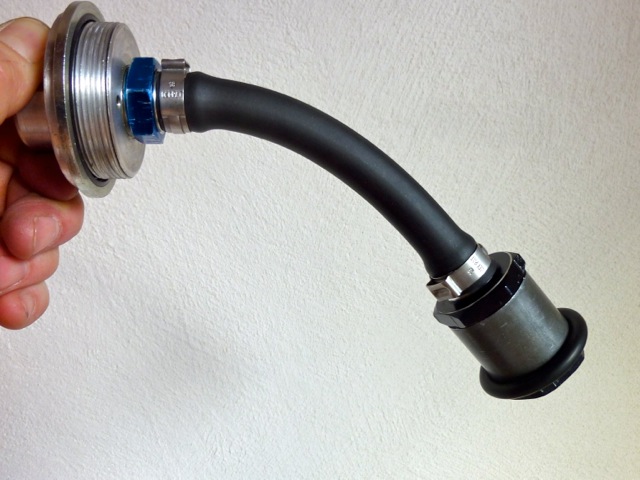I forced a 1/2 mm steel wire coil spring into the tube to prevent it from getting crushed or kinked.
I wrapped a piece of 3/64" lead sheet around the valve to lightly increase its weight (+ 35 g) and get a good movement: +/- 90 mm for a free length of 95 mm. I used tin-lead solder to make it a tight cylinder around the valve.
The new flop tube is much more flexible, provides more than twice the previous flow area, but is 170 g lighter. Moreover, the Goodridge check valve is perfectly tight and opens at the lightest suction to a full 1/2" diameter.
All stuff comes from Goodridge and Mc Master-Carr. A lathe was necessary to adapt the Goodridge fitting and valve to the tube.
I wound the steel wire in the threads of a 12 mm rod and forced them together inside the tube, then unscrewed the rod which let a coil spring tight against the tube wall. The tube keeps its flexibility, but gets very strong.

My previous flop tube was made of corrugated Teflon tubing, but of smaller diameter to get a good flexibility. Sometimes the oil pressure was low at idle when hot, probably due to the too small diameter. Making the fitting tight on corrugated Teflon needed a high pressure crimping, and with time the aluminium fittings got cracked and leaked.
Moreover I was using an original heavy flop weight, with an original one-way valve which I didn't trust very much, for tightness as well as flow capacity.
I got the steel wire from a local shop, but McMaster-Carr sells the same: 8860K11/12 for instance.
Gilles

